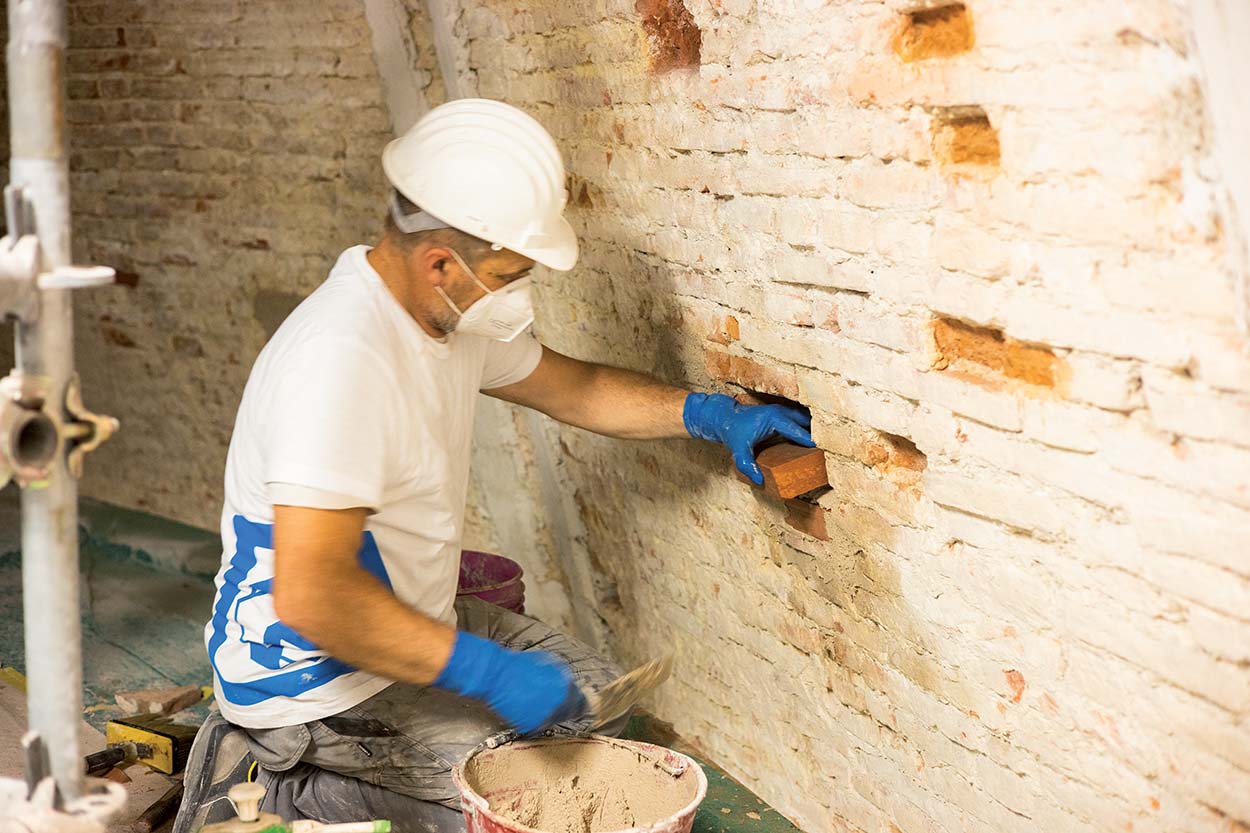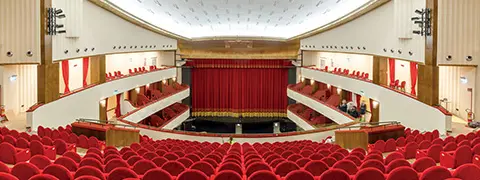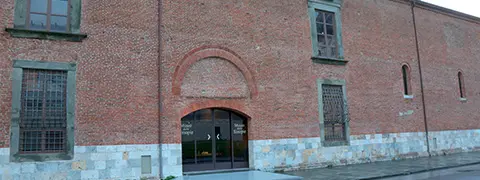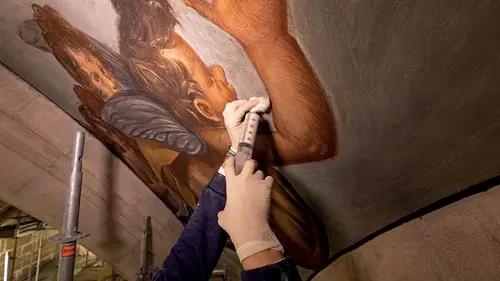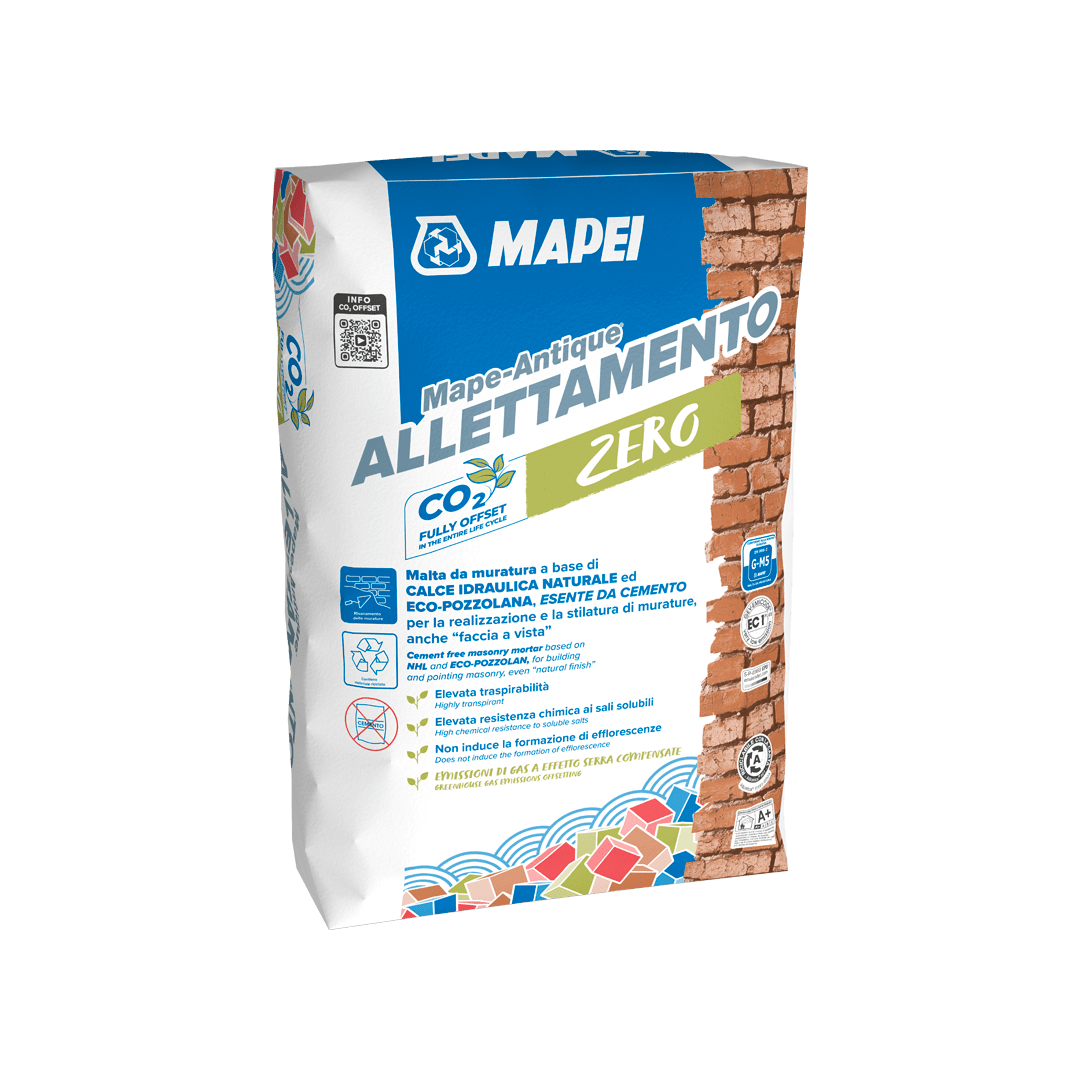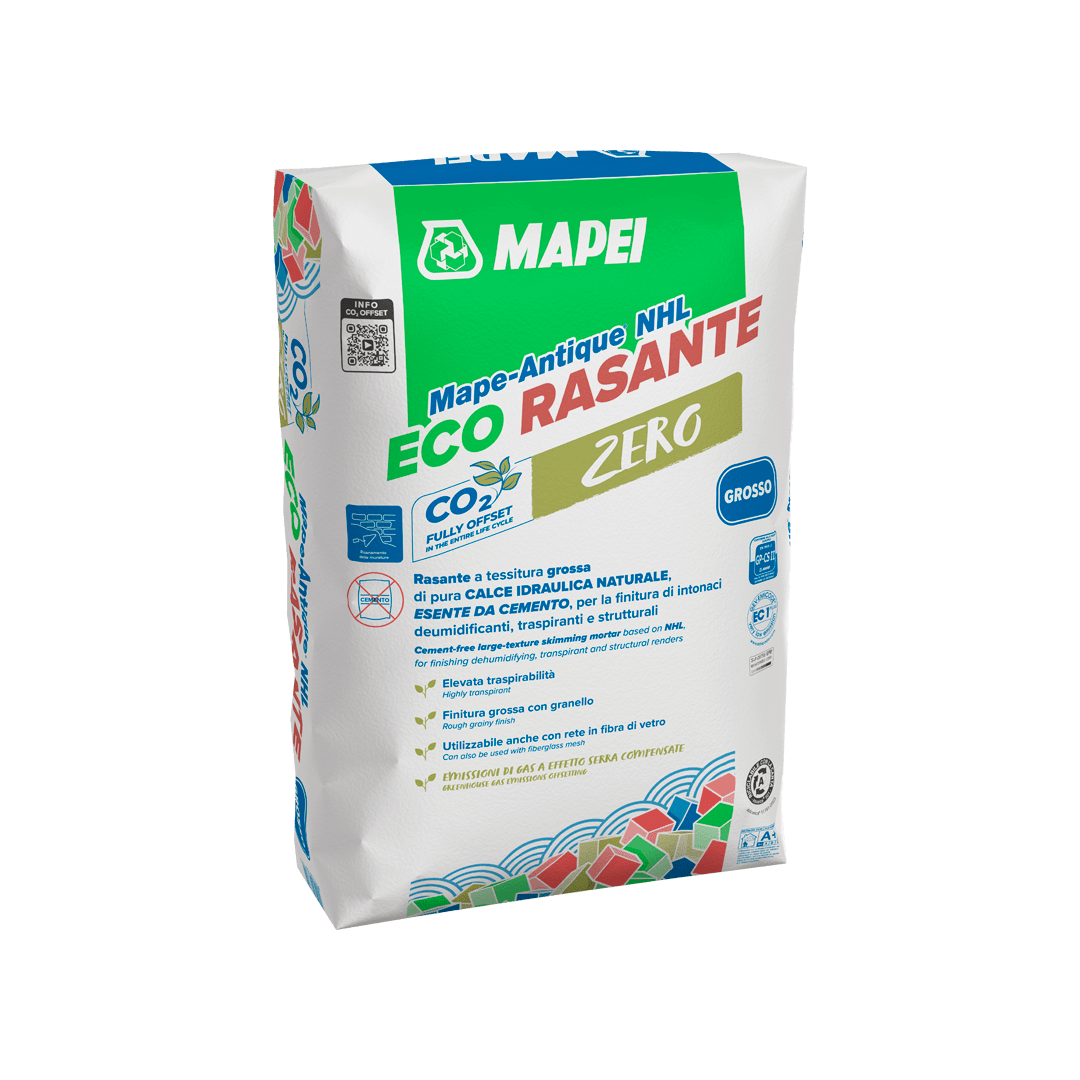

Baptistery of St. John
Render inside the cupola restored to its antique splendour. An effective restoration intervention that respects aesthetics
Render inside the cupola restored to its antique splendour. An effective restoration intervention that respects aesthetics.
The biggest baptistery in the whole of Christendom
With a circumference of 107 m and a height of 55 m, the monument rising in front of the western façade of Santa Maria Assunta Cathedral in Piazza dei Miracoli is the biggest Baptistery in the whole of Christendom. Construction of the building started in the 12th century but the work was only finally completed after more than two centuries.
As testified by an inscription on two pillars inside the building dated 1153, construction work was initiated by the architect Deotisalvi: MCLIII, MENSE AUGUSTI FUNDATA FUIT HAEC ECCLESIA; DEUSTESALVET MAGISTER HUIUS OPERIS (In August 1153 this Church was founded, Diotisalvi was the designer of this work).
Work on the Baptistery started again, after an interruption of one century, thanks to Nicola and Giovanni Pisano. The façade in Pisan Romanesque style is richly adorned with sculptures, many of which were transferred to the nearby Museo Dell’Opera Del Duomo. Inside the Baptistery, a women’s gallery overlooks the central space, providing an enchanting prospective to observe the baptismal font in which Galileo Galilei was baptised in 1564. The roofing system of the monument is characterised by a double cupola: an internal one in the form of a truncated pyramid with a dodecagonal base and an external one in the form of a semi-spherical canopy. This architectural workaround gives the Baptistery excellent acoustics, but leaves the upper cupola more exposed and provides less protection from meteorological and climatic conditions, which led to its deterioration clearly visible from inside the building prior to the restoration work. The render on the intrados of the cupola showed clear signs of physical damage caused by external and anthropic factors: areas of missing render, portions of detached render, surface stains, cracks and the reappearance of putlog holes.
The Baptistery of St. John is the biggest Baptistery in the whole of Christendom. It was reopened to the public in 2019 after a fine restoration to which Mapei participated.
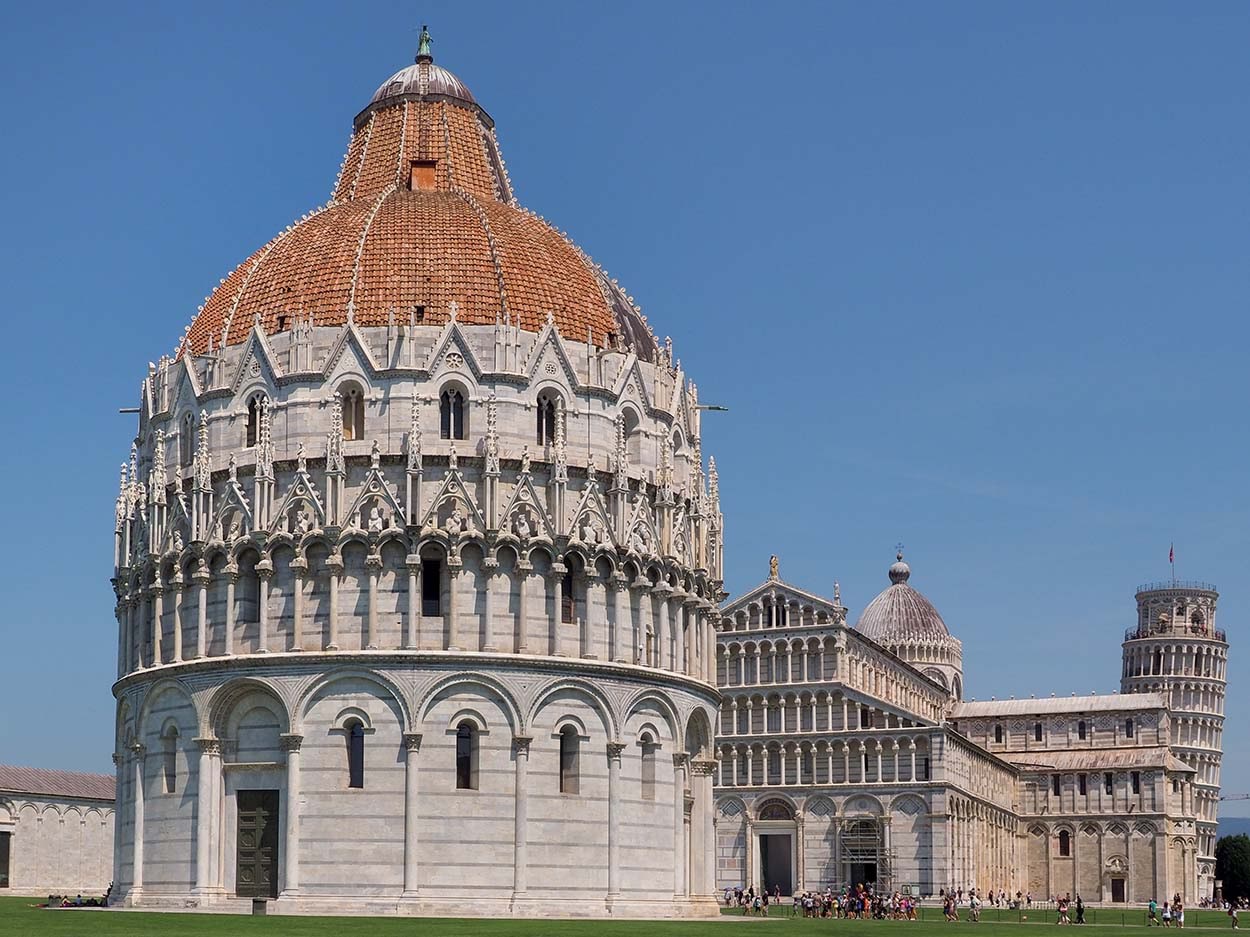
A winning teamwork
Impresa Cellini, a contracting company involved in restoration work on historic monuments and buildings since the end of the 19th century (with which Mapei also collaborated in restoration work on the Baptistery of St. John in Florence), was also part of this synergy. It was very important to use materials which were chemically-physically and elasto-mechanically compatible with the original substrates, and products from the MAPE-ANTIQUE line played a key role as they are all completely cement-free and made from lime and Eco-Pozzolan, and developed specifically for consolidation, repair and restoration work on masonry of buildings of historic and artistic interest.

Restoration work on the render
All the render in poor condition and any loose material were carefully removed. The masonry was then cleaned until a sound, compact substrate was obtained. The gaps and voids from the putlog holes were repaired by applying MAPE-ANTIQUE ALLETTAMENTO cement-free, salt-resistant mortar made from natural hydraulic lime and Eco-Pozzolan. For the new render, a layer of MAPE-ANTIQUE STRUTTURALE NHL was applied by trowel. This is a cement-free, fibre-reinforced mortar, made from natural hydraulic lime and Eco-Pozzolan, which is used to make breathable render compatible with the mechanical performances of the existing masonry. Once the mortar had cured, it was skimmed with a coat of MAPE-ANTIQUE NHL ECO RASANTE GROSSO, a coarse-grained, breathable mortar made from pure natural hydraulic lime with the same texture as the original render to create a balanced finish.
Mapei products from the Mape-Antique line have been used to repair the gaps and voids from the putlog holes, but also for the new render and for the skimming operations.
Consolidation of the existing render
The render that had become detached from the masonry, for which it was decided to leave in place, was consolidated and re-bonded to the masonry by injecting super-fluid, lime-based slurry. The first step was to drill a series of holes. All traces of dust were removed from the substrate with a hand-pump and then syringes were used to inject a slurry made up with MAPE-ANTIQUE F21. This injection slurry was developed by Mapei for another project: the consolidation work on the frescoed vaulted ceilings by Giotto and Cimabue in the Upper Basilica of San Francesco in Assisi, which was damaged by an earthquake in 1997 (see Realtà Mapei International no. 5). On that occasion Mapei developed MAPE-ANTIQUE F21, a super-fluid, cement-free, salt-resistant fillerized hydraulic binder, made from hydrated lime and eco-Pozzolan, ideal for injection slurries for consolidating masonry and render, including the frescoed ones. MAPE-ANTIQUE F21 may be applied without having to wet the substrate beforehand: the water-retention additives contained in the binder prevents water contained in the product from staining the surface of high-quality finishes. Also, because there are no soluble salts or free lime in the slurry, the product cures perfectly with no efflorescence phenomena. Indeed, free lime inside masonry to be consolidated, not being able to find any air (CO2) for carbonation, could remain as a paste for a very long time and temporarily compromise the effectiveness of the structural consolidation work.
The render was consolidated and re-bonded to the masonry by injecting the same Mapei product developed for the consolidation work on the frescoed vaulted ceilings by Giotto and Cimabue in Assisi.
Problems and solutions
The objective of the owner was to restore the deteriorated and damaged render inside the cupola of the Baptistery and bring it back to its original splendour.
Restoration of the inside of the cupola required particular care for both the consolidation of the existing render, for which it was decided to leave in place, and for the new render. This required the use of products guaranteeing excellent compatibility and an excellent bond with the original substrates, while at the same time ensuring a colour and texture with a beautifully balanced final finish in line with the original look of the cupola. MAPE-ANTIQUE STRUTTURALE NHL and the other products from the MAPE-ANTIQUE Line, enabled this excellent result to be achieved.





